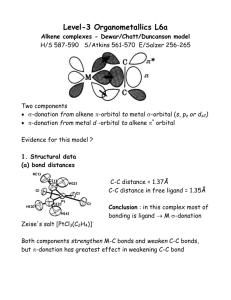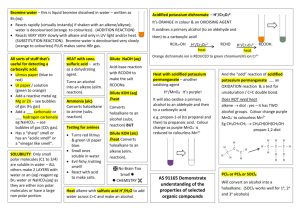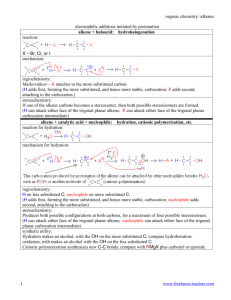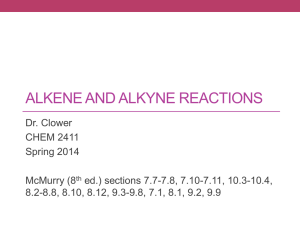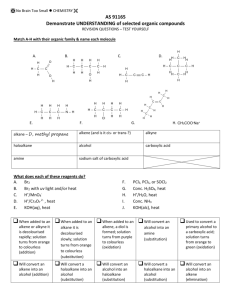AldolWU Rev 7-08 - Chemistry at Winthrop University
advertisement
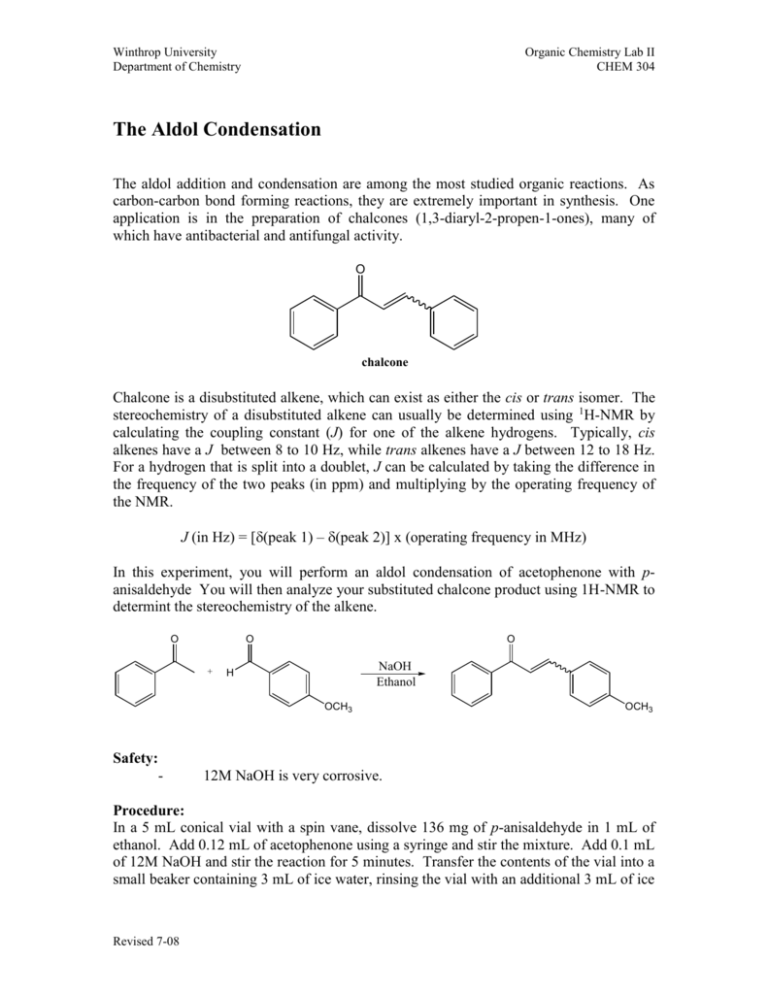
Winthrop University Department of Chemistry Organic Chemistry Lab II CHEM 304 The Aldol Condensation The aldol addition and condensation are among the most studied organic reactions. As carbon-carbon bond forming reactions, they are extremely important in synthesis. One application is in the preparation of chalcones (1,3-diaryl-2-propen-1-ones), many of which have antibacterial and antifungal activity. O chalcone Chalcone is a disubstituted alkene, which can exist as either the cis or trans isomer. The stereochemistry of a disubstituted alkene can usually be determined using 1H-NMR by calculating the coupling constant (J) for one of the alkene hydrogens. Typically, cis alkenes have a J between 8 to 10 Hz, while trans alkenes have a J between 12 to 18 Hz. For a hydrogen that is split into a doublet, J can be calculated by taking the difference in the frequency of the two peaks (in ppm) and multiplying by the operating frequency of the NMR. J (in Hz) = [(peak 1) – (peak 2)] x (operating frequency in MHz) In this experiment, you will perform an aldol condensation of acetophenone with panisaldehyde You will then analyze your substituted chalcone product using 1H-NMR to determint the stereochemistry of the alkene. O O + O NaOH Ethanol H OCH3 Safety: - OCH3 12M NaOH is very corrosive. Procedure: In a 5 mL conical vial with a spin vane, dissolve 136 mg of p-anisaldehyde in 1 mL of ethanol. Add 0.12 mL of acetophenone using a syringe and stir the mixture. Add 0.1 mL of 12M NaOH and stir the reaction for 5 minutes. Transfer the contents of the vial into a small beaker containing 3 mL of ice water, rinsing the vial with an additional 3 mL of ice Revised 7-08 Winthrop University Department of Chemistry Organic Chemistry Lab II CHEM 304 water. Collect the solid via vacuum filtration and wash with a small amount of ice water. Allow the vacuum to pull for at least 15 minutes to dry the product. Recrystallize the product from about 1 mL of ethanol, and collect the solid via vacuum filtration. Determine the weight and melting point of your product, and obtain a 1H-NMR spectrum. Write-Up: Calculate the percent yield (show the calculation) of your product. Compare your melting point to the literature value. Determine the coupling constant for one of the alkene hydrogen doublets of your 1H-NMR (the most easily interpretable alkene resonance occurs at 7.8 ppm and Winthrop has a 300MHz NMR). Use the coupling constant to determine the stereochemistry of the alkene. Is this the result you expected? Questions: 1. This particular experiment gives the condensation product, to the complete exclusion of the addition product. Explain why. 2. Find and draw the structure of trans-cinnamaldehyde, which is responsible for the characteristic fragrance and flavor of cinnamon. What is the coupling constant for the hydrogen on carbon-3 if the two peaks of the doublet occur at 7.412 and 7.416 ppm on a 400 MHz NMR? Is this value consistant with the structure? 3. Using Student Spartan, build models of cis and trans-chalcone. Minimize the energies and determine the difference in the energies of formation between the two isomers (calculate equilibrium geometry using the semi-empirical method). Using this energy difference as an approximation of the Go, calculate the trans/cis ratio at equilibrium at 25 oC. Revised 7-08
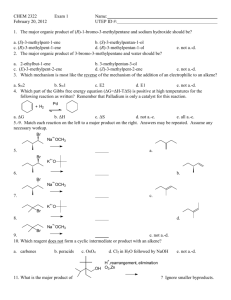
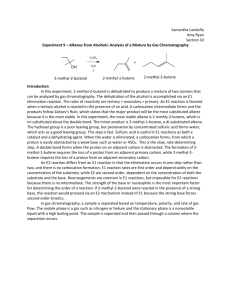

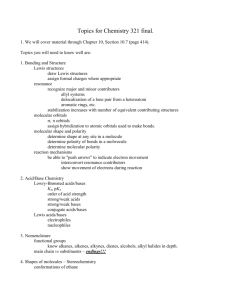
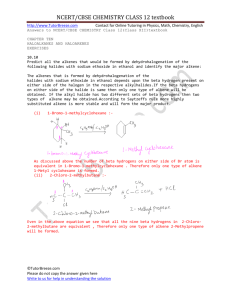
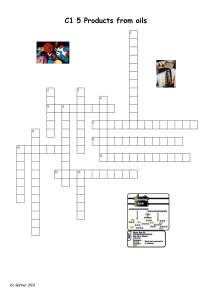
![1: [2+2] Photocycloadditions in Organic Chemistry 1. Basics](http://s2.studylib.net/store/data/013496560_1-8345a38cec5b9615fc2091b0051fc0b0-300x300.png)
